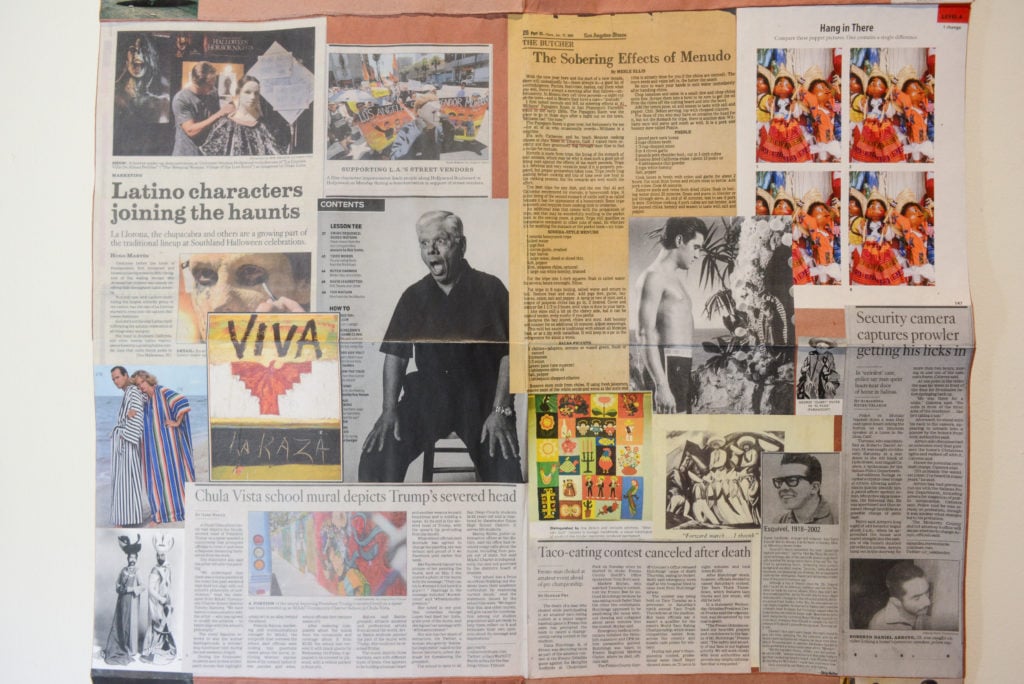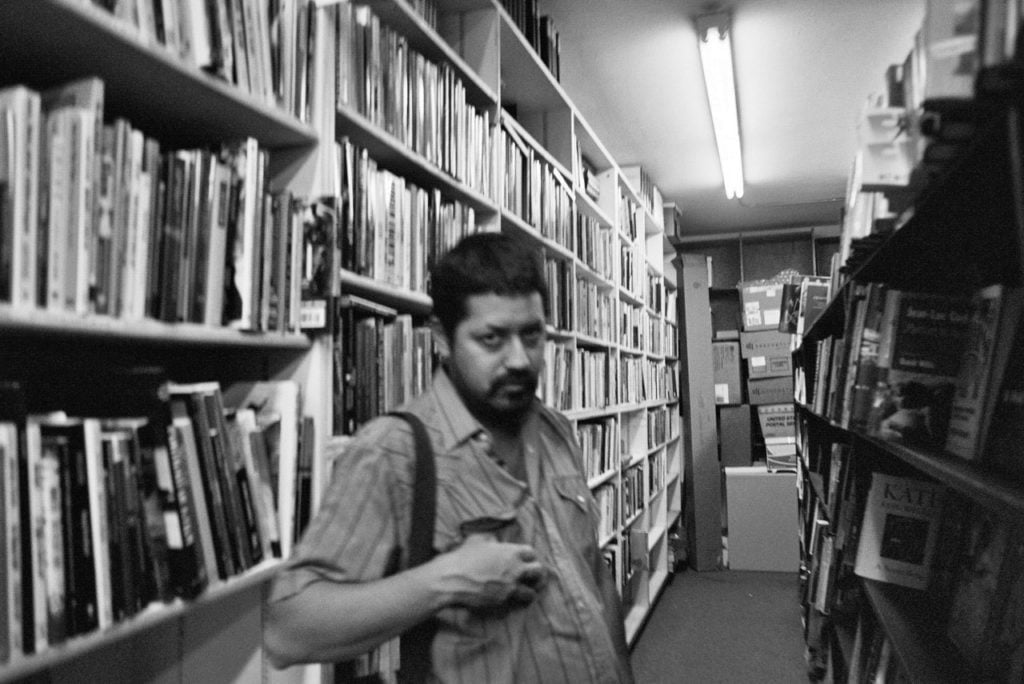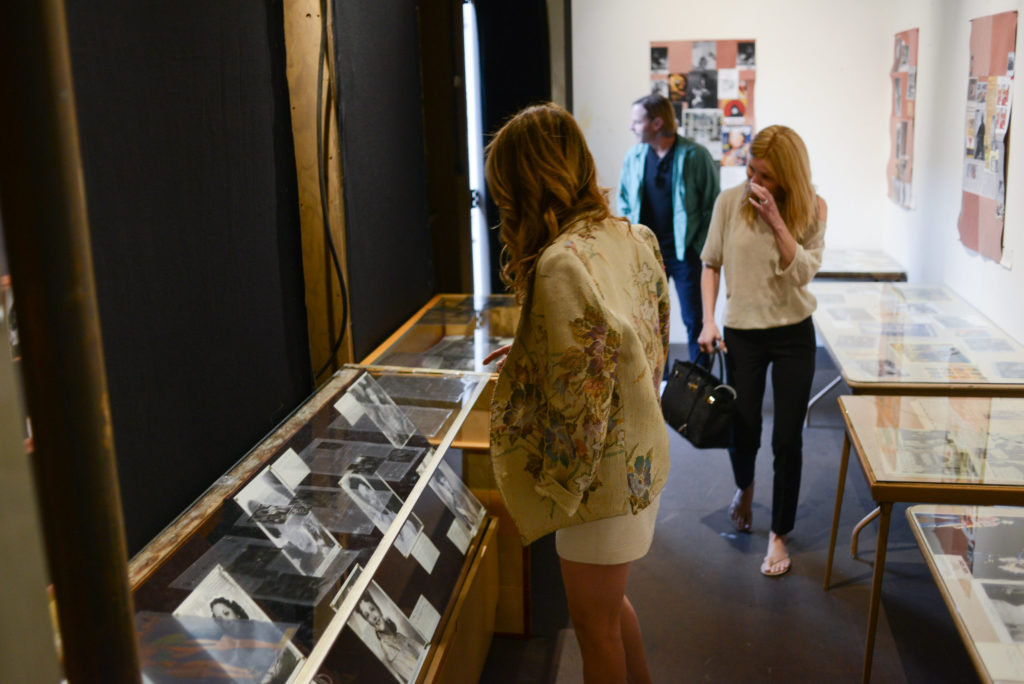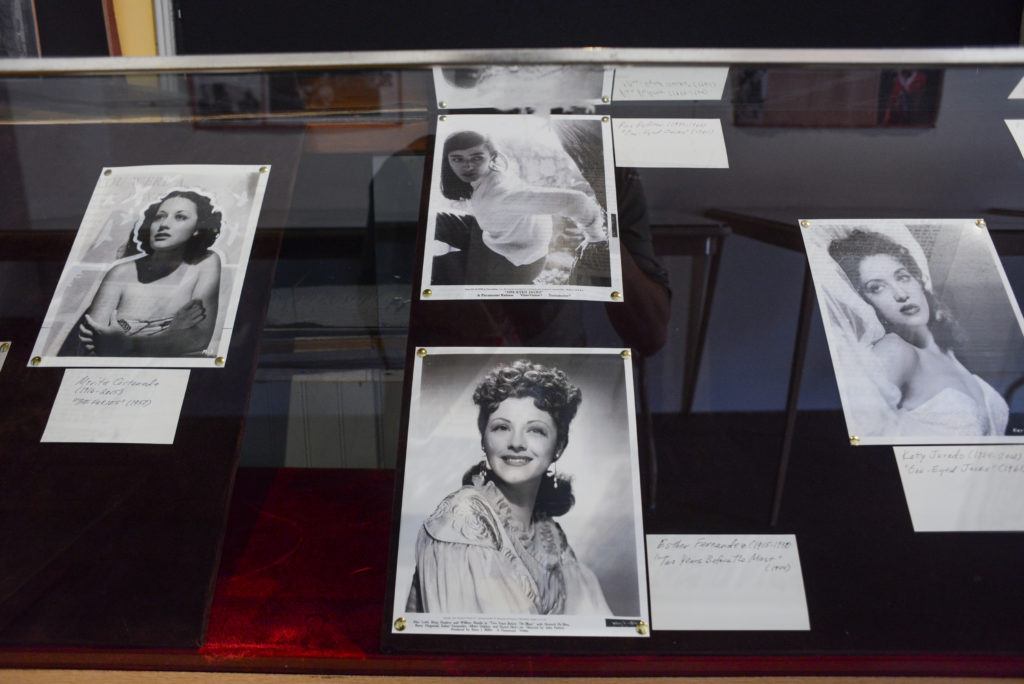Art Fairs
An Artist Mined the Paramount Pictures Archives to Critique Mexican Representation in Cinema History at Frieze Projects
Vincent Ramos focused on Chicano and Mexican visibility from the 1930s to the ‘70s.

Vincent Ramos focused on Chicano and Mexican visibility from the 1930s to the ‘70s.

Sarah Cascone

Tucked away on the Paramount Pictures backlot at Frieze Los Angeles is a museological display in crumbling vitrines. It pairs historic images of Mexican movie stars with collages recalling moments of conflict for Chicanos in Los Angeles history, such as the Zoot Suit Riots and the demolition of Chavez Ravine, a Mexican neighborhood, to build Dodger Stadium.
The piece, titled Wolf Songs for the Dead, is by Vincent Ramos, a third generation Mexican American Angeleno who was granted access to the Paramount Pictures archives for the project.
“I focused on Mexican or Chicano representation over the course of the studio’s history,” from the 1930s through the ’70s, Ramos told Artnet News. “I wanted to use the opportunity [of the archives] as a starting point to talk about a much larger issue, about representation in general.”
The artist was a natural choice for curators Rita Gonzalez and Pilar Tompkins Rivas for this year’s Frieze Projects. Through his practice, which is steeped in archival research, Ramos was already invested in cinematic history, incorporating old film stills and movie posters in his work to uncover the overlooked histories of Los Angeles’s Mexican and Latino communities.

Vincent Ramos. Photo by Lauralee Pope, courtesy of the artist.
When it came to the Paramount archives, the research was illuminating, but also revealed lots of gaps in the record. “Because of the nature of this material, the ephemera, the paper, a lot of this just didn’t survive its era,” said Ramos. “The studios got rid of a lot of stuff because they didn’t think it was going to be worth anything.”
The artist wasn’t permitted to use the actual archival materials in the project, so he instead purchased the images he wanted on eBay or from other sources, adding to his already considerable collection. After the fair, the site-specific piece will be taken apart, the historic photographs ready for use in Ramos’s future projects.
“I never stop collecting. It’s always growing,” said Ramos.

Vincent Ramos, Wolf Songs for the Dead at Frieze Projects, installation view. Photo courtesy of Frieze Los Angeles.
As one might expect, the project deals heavily with stereotypes, with film stills from old Westerns that cast Mexican actors as bandits and criminals. But there are also glamorous headshots of Mexican actresses who became icons of the silver screen, reminding the viewer of the complexities of representation.
“It’s particularly poignant for us to present a project like this,” said Gonzalez, “because one of the problems with the lack of visibility of Latinos is that what fills the void is the hate speech, such as Trump’s speech about Mexican people as rapists.”

Vincent Ramos’ Frieze Project room in the Backlot of Frieze Los Angeles at Paramount Pictures Studios. Photo by Casey Kelbaugh.
Ramos’s work tells the unseen stories. His collages remind the viewer about tense historical events such as the National Chicano Moratorium March against the Vietnam War, which killed four Latino activists including journalist Ruben Salazar. He’s done them on paper the same size as traditional Hollywood one-sheet film posters, tying it back to cinematic history and pop culture.
The work is both about “depictions of Mexicans and then the real on the ground conflicts and struggles in Los Angeles at the same time,” Gonzalez said.
Frieze Los Angeles will take place at Paramount Pictures Studios, entrance at Lot B 5400 Melrose Avenue or 801 N Gower Street, Los Angeles, February 13–16, 2020.